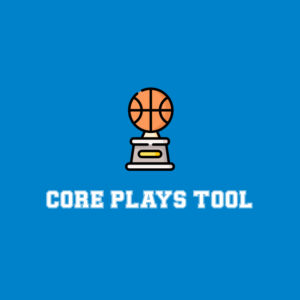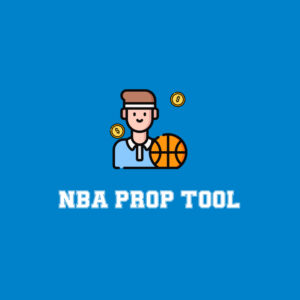
As we enter the 2025 NFL Draft, the Cleveland Browns find themselves in a pretty terrible situation. They spent a bunch of resources on Deshaun Watson — $230 million, fully guaranteed – and it’s blown up in their faces. Since signing, Watson had had -639 passing DYAR, fifth worst in the league over the past three years, and now the Browns are shopping for a replacement. Their big question is whether they take the top quarterback available to them – likely Shedeur Sanders – or if they take the better overall prospect in an Abdul Carter or Travis Hunter and then look to solve their quarterback problems elsewhere.
It’s not a million miles away from where the Arizona Cardinals found themselves six years ago. They spent a bunch of resources on Josh Rosen – trading up to the 10th pick in the 2018 draft, giving up third- and fifth-round picks in the process – and it blew up in their faces. In his rookie season, Rosen had the worst passing DYAR total in NFL history at -1,145, and despite their proclamations to the contrary, the Cardinals were shopping for a replacement. The big question was whether they would take the top quarterback available to them – likely Kyler Murray – or if they would take the better overall prospect in Nick Bosa or Quinnen Williams and then look to solve their quarterback problems elsewhere.
One of our favorite pieces to write each year is a review of the draft from six years ago. While everyone will rush to hand out grades in the immediate aftermath of next week’s draft, you can’t really evaluate a class until enough time has gone by to let the players develop and prove what they can do on the field. By looking back on a draft six years later, we can better evaluate just how strong the draft actually was, which teams did the best job of adding to their rosters, and which projections were laughably incorrect.
Bill Belichick, if you’re reading, now would be a good time to click away.
Six years later, the 2019 class has been a little underwhelming overall, at least at the top end. Only six players from the 2019 draft have developed into first-team All-Pros, and that includes punter Jake Bailey. That’s fewer than 2020 (9), 2021 (8) or 2022 (7), all of which have had less time to rack up plaudits. That said, the 2019 draft looks better once you get past the lack of top-end, league-altering talent. It was another in a long run of very good receiver drafts, with arguably the best Rounds 2-3 the position has ever seen. Like 2025, it was a great year to draft interior linemen early, with multiple stars going off the board on Day 1. And if you’re a fan of critiquing draft day trades, all but two picks from 20 through 31 changed hands, with some teams looking, shall we say, significantly better than others after their wheeling and dealing.
For a reminder of who went where, Pro Football Reference is your source for all the picks in the draft and their basic statistics, while Pro Sports Transactions is a great way to trace draft pick trades.
Quarterbacks
Conventional Wisdom: It was a good year to need a quarterback – so many options to choose from!
Two passers in particular were universally considered first-round picks – Oklahoma’s Kyler Murray and Ohio State’s Dwayne Haskins. By draft day itself, it was clear that Murray would be taken by his old coach Kliff Kingsbury as an ideal system fit – an important factor for an athletic phenom with some significant physical questions. Scouts were worried that Murray was severely undersized at 5-foot-10 and were concerned about him having just one year of starting experience. But he was a plus-rusher and passer, and a real dual-threat quarterback. The success of Russell Wilson proved that shorter, mobile quarterbacks had a place in the league, and the elusive Murray seemed destined to make defenders’ lives miserable for decades. Some scouts did prefer Haskins, however, despite his mobility having him compared to pocket statues like Drew Bledsoe. His natural touch and anticipation, plus a rocket arm, had scouts drooling, even if he, too, only had one year of starting experience. It was a question of what type of passer you were looking for – was Murray the wave of the future, or was Haskins’ more traditional skillset the way to go?
Or perhaps you wanted a quarterback with more than a single season of starting experience. If so, maybe you turned to Missouri’s Drew Lock. Lock was drawing Patrick Mahomes comparisons, both for the size of his arm and the work needed to polish him for NFL-level play. Yes, he had lack of consistent accuracy, but he was arguably the most talented passer available – combining some of Haskins’ arm strength with more than a dash of Murray’s mobility, albeit without the consistency of either.
Other notable quarterbacks included Duke’s Daniel Jones – a developed, polished passer who succeeded despite lesser talent around him. Most scouts had him pegged as a game manager-type without the physical traits of the top guys, but he was well-built with good pocket presence. Sticking in state, North Carolina’s Ryan Finley was also high on a few draft boards, with Scouts Inc in particular having him as a first-round talent – but he was already 24, old for a prospect. These are the kinds of players you were looking for if you valued experience in a pro style offense, which was scarce on the ground in 2019. We should also point out West Virginia’s Will Grier, as 538’s projection model called him the second-best passer in the class!
QBASE was a little concerned about the lack of track record for Murray and Haskins, as well as their high level of surrounding talent that might inflate their results. Still, it placed them as two of the top seven prospects with less than three years of starting experience in the database at the time, and that was before it incorporated mobility metrics that would make Murray look even better. Murray ended up just above Haskins, followed by Finley, Lock and Jones in that order. Grier was much, much further behind.
Highest Pick: Kyler Murray, first overall to the Arizona Cardinals.
Best Player: Murray has been something of a frustrating player to this point, with hot and cold stretches making it hard to really pin him down. When he’s on top of his game, he’s everything that was advertised – a nightmare for defenders to chase down with enough touch to make some truly beautiful throws. And then he’ll have games where he gets rocked 15 times in the pocket and can’t complete a forward pass to save his life. The highs have certainly outweighed the lows, and his 3,596 adjusted DYAR is 14th in the league since he was drafted. The Cardinals would make the same pick if they had to re-draft 2019 today, and that’s all you can really ask for.
Biggest Bust: Dwayne Haskins ended up as the third quarterback taken, falling to Washington at No. 15 after the Giants took Jones instead. We want to be respectful when talking about Haskins, who was struck by a truck and killed in April 2022, but there’s no getting around his poor on-field record. It soon came out after the draft that coach Jay Gruden and the staff weren’t fully on board with the Haskins pick due to his lack of experience, but were overruled by Dan Snyder – Haskins had gone to high school with Snyder’s son. In the league, Haskins was as immobile as advertised, racking up 49 sacks in 13 starts for Washington. By 2020, he had been demoted to third string, and was fined, stripped of his captaincy, and ultimately cut after his second COVID-19 protocol violation in 2020. He was attempting to make a comeback with the Steelers at the time of his death, but he was the third-stringer there, as well.
Best Value: Washington State’s Gardner Minshew II went to the Jaguars at the top of the sixth round, and quickly became both a meme and a somewhat credible quarterback. When Nick Foles fractured his clavicle in the first quarter of his first game in Jacksonville, Minshew was forced into action and played more than acceptably, finishing his rookie year with a -5.0% passing DVOA and 294 adjusted DYAR. Minshew has settled into that below-average, above-replacement level tier that makes him a palatable bridge quarterback and above average backup, which is a tremendous find in the sixth round. He and Murray are the only two passers in this class who have really outperformed their draft position, with Daniel Jones ranking a fairly distant third. He also rocks a Fu Manchu like few others, which certainly doesn’t hurt.
Running Backs
Conventional Wisdom: Only one running back threatened to go in the first round in 2019: Alabama’s Josh Jacobs. Jacobs didn’t get much work at Alabama because the school churned out top running backs like nobody’s business, but when he did get the ball, he jumped off the tape. Forceful, violent and sturdy as a rusher, with enough gas to get around the corner. A solid pass catcher who could be split out in certain packages. A true three-down player without a lot of tread on his tires. Most scouts had him a clear tier or three over teammate Damien Harris, or other Day 2 prospects such as Iowa State’s David Montgomery or Penn State’s Miles Sanders.
You know what didn’t love Josh Jacobs? BackCAST. Our projections for Jacobs that year had him 21st in the class. It hated that he couldn’t win a starting job in the Alabama backfield – he wasn’t even the second-leading rusher on those Crimson Tide teams, behind Najee Harris. He averaged only 5.33 yards per carry, a full half-yard less than either Alabama Harris. He also couldn’t break a 4.6-second 40 at his pro day, so the speed wasn’t there. BackCAST warned you away, and said you should look for someone like Memphis’ Darrell Henderson Jr. or Texas A&M’s Trayveon Williams instead.
Highest Pick: Josh Jacobs, 24th overall to the Oakland Raiders. This was part of the Khalil Mack trade, where Oakland got Chicago’s first-round picks in both 2019 and 2020.
Best Player: Jacobs. Swing and a miss, BackCAST. Jacobs has been to the Pro Bowl essentially ever year he’s been healthy and was named first-team All-Pro in 2022 when he topped 2,000 yards from scrimmage. That season looks like an outlier for him, but his 8,664 yards are comfortably ahead of everyone else from this class, and his 826 combined DYAR ranks 14th among running backs since he entered the league. BackCAST gets some credit back for singling out David Montgomery as the top option, as he has the second-most yards in the class and a higher total DYAR. Jacobs’ highs are higher, though, and he gets the nod.
Biggest Bust: None of the backs taken in the first three rounds really has disappointed, so we have to dig deep. Stanford’s Bryce Love went 112th to Washington, falling because of a torn ACL in his final college game. He never played a game with Washington, spending time on the NFI and IR lists before eventually being waived. If you prefer a player who saw the field, Kentucky’s Benny Snell Jr. went 10 picks later to Pittsburgh, averaging 3.6 yards per carry for his career before washing out.
Best Value: We like both Jacobs and Montgomery, but let’s single out Memphis’ Tony Pollard instead, if only for variety’s sake. Pollard went in the fourth round to Dallas, beginning as a change-of-pace backup to Ezekiel Elliott and gradually transforming into an ongoing question as Dallas seemingly refused to give him more carries despite him being demonstrably better on the field. Pollard had rushing DVOAs of 11.6%, 13.0% and 17.9% in his first three seasons, much better than Elliott put up in the post-COVID era. Eventually, Pollard did become the primary guy, first in Dallas and now in Tennessee, though he’s never quite lived up to those first few seasons. That’s partially workload and partially lingering effects from his fractured fibula in the 2022 season but getting a Pro Bowl player in the fourth round is always worth plaudits.
Wide Receivers
Conventional Wisdom: The thinking going in was that this was a good year for Day 2 wide receivers, but you were more or less out of luck if you were hoping to find a first-round difference maker. Oklahoma’s Marquise Brown was the biggest name out there – one of the fastest prospects in NFL history, with a 4.27s 40-yard dash at his pro day. Brown was extremely undersized at 5-foot-9 and 166 pounds, but you can’t teach speed like that, and the combination of the ability to take the top off a defense plus his after-the-catch talent made him look like the most likely receiver to make an immediate impact. Mississippi’s DK Metcalf was more polarizing, but also generally considered promising. His 4.33-second 40 was the fastest ever for a player over 225 pounds, but his terrible 3-cone and shuttle drills made him into a meme – an all-abs, zero-agility player who could run in straight lines and nothing else. There was no doubting his raw height, weight and speed, but there was the question if he could put it all together.
Playmaker Score agreed that Brown was the best prospect in the class, but felt that there were several prospects from relatively low-profile schools who could make a splash in the middle rounds instead. It had JJ Arcega-Whiteside (Stanford), A.J. Brown (Ole Miss) and Hakeem Butler (Iowa State) over Metcalf, in large part due to Metcalf having fewer than 700 yards in each of his college seasons. We noted that it may be underrating Metcalf due to injury, but receivers with shorter track records sometimes have issues duplicating their success in the pros. But between Playmaker’s favorites, and other notable names like N’Keal Harry (Arizona State), Parris Campbell (Ohio State), Deebo Samuel Sr. (South Carolina) and Emanuel Hall (Missouri), waiting on a wide receiver seemed like the best plan.
Highest Pick: Marquise Brown, 25th overall to the Baltimore Ravens. This was part of a trade back, where the Eagles jumped up to 22nd to take Andre Dillard, while the Ravens got picks which became Brown, Iman Marshall and Trace McSorley.
Best Player: A loaded class with a clear answer. With all due respect to Metcalf, Terry McLaurin and Deebo Samuel Sr., Mississippi’s A.J. Brown runs away with this award. Brown went 51st overall to the Titans and immediately established himself as a star, leading all rookies with 1,051 receiving yards in year one and never looking back. He’s currently 700 receiving yards ahead of second-place McLaurin in the class. His 1,672 receiving DYAR since he entered the league is fourth behind Justin Jefferson, Tyreek Hill and Mike Evans. He’s a foundational building block receiver, and the Titans are over the moon to have him on their … oh. Oh, well, times were still fun while they lasted, right?
Biggest Bust: Arizona State’s N’Keal Harry went 32nd overall to the Patriots, who had been looking for a starting receiver for roughly 27 and half years at that point in time. Harry, it turns out, was not the answer. The next cornerback Harry manages to separate from will be his first, as he’s never topped 310 yards nor 51 DYAR in a season. By the end of his time in New England he was a healthy scratch, and he is considered a key part of Bill Belichick’s downfall. JJ Arcega-Whiteside (57th to Philadelphia) and Parris Campbell (59th to Indianapolis) are worth noting too, considering how good the second round of the draft was for wideouts, but Harry is a cut above.
Best Value: A.J. Brown takes this award, too. I’d go so far as to argue he’s the best value pick of the entire draft, though Las Vegas has an edge rusher who may have a thing or two to say about that. Most years, Metcalf at 64 or McLaurin at 76 would be great choices, but Brown has been on another level.
Tight Ends
Conventional Wisdom: A great year to be an Iowa Hawkeye, a traditional tight end powerhouse school that had not one, but two top prospects in 2019. Both T.J. Hockenson and Noah Fant were coming out, and they were 1-2 on most scouts’ boards. Hockenson was your target if you wanted a more fully rounded tight end. He still needed to fill out his frame some, weighing in at just 251 pounds, but he was a freaky athlete. He had a great initial burst off the line, and was fast in fluid as a route runner, while also boasting a crisp punch as an inline blocker. Fant was more of your classic big slot receiver in tight end’s clothing – a matchup nightmare as a move tight end who lacked the play strength to really feature heavily as a blocker. Those two, plus Alabama’s Irv Smith, were heads and shoulders above the rest of the class.
Highest Pick: T.J. Hockenson, eighth overall to the Detroit Lions.
Best Player: We’ll go with Hockenson again. He’s made the Pro Bowl twice and has been a reliable pair of hands. He’s never topped 1,000 yards or reached double-digit touchdowns in a season, so he hasn’t really lived up to the top-10 pick pedigree, but he’s passed 4,000 yards for his career and is 700 yards ahead of Noah Fant in this class. The Lions were willing to trade him to a division rival, which shows you that he hasn’t exactly been indispensable. A fine player – a good one, even — but overdrafted.
Biggest Bust: Irv Smith fell to 50th before the Vikings stopped his slide. He hasn’t done much. His highwater mark was 365 yards and five touchdowns in 2020. He missed all of 2021 with a torn meniscus, much of 2022 with an ankle injury, and part of 2023 with a hamstring pull, further slowing down his career. He is currently a free agent and is not in particularly high demand. We could go with Washington’s Drew Sample, taken two slots later, or third-round pick Josh Oliver out of San Jose State, too, but Smith had the most hype coming in.
Best Value: Only one tight end has really outplayed his draft position – Mississippi’s Dawson Knox, who went 96th to Buffalo. Knox’s 23 receiving touchdowns tie Hockenson for most for a tight end in the class and are sixth-most among all players. Knox has never hit 600 receiving yards in a season but has at least featured as a red zone threat on a semi-regular basis. In an underwhelming tight end class, that’s what counts as a value pick.
Offensive Line
Conventional Wisdom: A great year to need a tackle, an OK year to need a center, and then guards also existed.
Take your pick from the tackle tasting menu. There was Florida’s Jawaan Taylor, a plus-run blocker with lengthy arms to hold off power rushers and an annoying tendency to false start. There was Alabama’s Jonah Williams, a foundational piece for the Crimson Tide whose superior technique and athleticism counterbalanced his smaller frame and shorter arms. There was Washington State’s Andre Dillard, an exceptional athlete with a 4.96-40 who needed to learn a little more ferocity on the point of attack. There was Oklahoma’s Cody Ford, who was 6-foot-4, 329 pounds and athletic to boot, but maybe needed a move inside to guard because of pass protection issues. Dalton Risner (Kansas State), Greg Little (Mississippi) and Kaleb McGary (Washington) were notable names as well.
If you viewed Ford as a tackle, then you had really one first-round option at both guard and center. Your guard was Boston College’s Chris Lindstrom, though he had also played tackle and could even be moved to center if you really wanted to, such was his athleticism and know-how. He’d be a stretch at tackle due to a lack of upper body strength, but he’d surely fit somewhere. Your center was Garrett Bradbury from North Carolina State, who originally had been a tight end before converting first to guard, then to center and winning the Rimington Trophy. That meant he was undersized, but he could more than hold his own and was scheme-flexible. You could also wait and get an Erik McCoy (Texas A&M) or Elgton Jenkins (Mississippi State), but they weren’t the headliners.
Highest Pick: Jonah Williams, 11th overall to the Cincinnati Bengals. Chris Lindstrom was the first guard, 14th to the Atlanta Falcons, while Garrett Bradbury led the centers at 18th to the Minnesota Vikings.
Best Player: We’re torn between Lindstrom and Mississippi State’s Elgton Jenkins, who went 44nd overall to the Green Bay Packers. They both have multiple Pro Bowls to their names and have earned large second contracts as key parts of their respective lines. I’d argue Jenkins was the better player through the first three years, while Lindstrom has been better over the last three, but we’re picking a few nits there. As for the best tackle, Kaleb McGary (who went 29th to Atlanta) and Jawaan Taylor (who went 35th to Jacksonville) are in the running, but the interior linemen win the crown.
Biggest Bust: The Eagles gave up three picks to trade up for Andre Dillard 22nd overall. This was an odd pick at the time, as the Eagles already had Jordan Mailata waiting in the wings to take over for Jason Peters and, lo and behold, Mailata eventually took over that left tackle role and hasn’t looked back. Maybe things would have been different if Dillard hadn’t torn his biceps and missed all of 2020, but that killed his momentum dead. The Titans kicked his tires as a starter in 2023 but released him after the season, and he is currently an unsigned free agent. We should tip our hat to Greg Little (37th to Carolina) as well, but Dillard gets the pick as the first-round player.
Best Value: Jenkins again, as multi-time Pro Bowl guards don’t grow on trees in the third round. We’ll also highlight Wisconsin’s David Edwards, who went in the fifth round and has started 61 games for the Rams and Bills.
Edge Rushers
Conventional Wisdom: The best argument for the Cardinals to keep Josh Rosen was the presence of Ohio State’s Nick Bosa. While not as fluid as his brother Joey, Bosa was outstanding both as a pass rusher and run defender with a motor that never quit and tremendous drive to knock defenders on their heels. He was good enough that there was a serious argument for Arizona to take him and trust Kliff Kingsbury to work out the kinks in Rosen’s game, such was Bosa’s hype.
But he was just the top billed player in a deep class of edge rushers. Teams that missed out on Bosa could settle for Kentucky’s Josh Hines-Allen (then just Josh Allen), Mississippi State’s Montez Sweat, Florida State’s Brian Burns or Clemson’s Clelin Ferrell, all of whom were projected as top-20 picks. Allen and Burns were your more polished, albeit undersized, picks. Sweat and Ferrell were your larger, more power-focused options. All four looked like great choices in the middle of the first round for pass rush-needy teams. And then you had a third tier of Jaylon Ferguson (Louisiana Tech), Chase Winovich (Michigan) and Jachai Polite (Florida) behind them. Separating the post-Bosa names out was a tough ask.
SackSEER liked the rest of the class so much that it actually knocked Bosa down a few pegs. Because Bosa spent some time injured, he lacked the sheer volume of sacks that the model liked to see from its top prospects. Instead, it preferred Burns, with his 23 sacks in just three seasons with the Seminoles and his 4.53 40. It also had Hines-Allen and Sweat ahead of Bosa, though all of them came out just fine in the projections. It just was a case of a bunch of top prospects, instead of a clear top guy and then a group a rung down.
Highest Pick: Nick Bosa, second overall to the San Francisco 49ers.
Best Player: There are two names in play here, but we’ll save one for the value conversation and instead pick Bosa, the 2019 Defensive Rookie of the Year and 2022 Defensive Player of the year. Despite missing nearly all of 2020 due to injury, Bosa leads the class with 62.5 sacks. He’s one of only five players to average a half-sack a game, and the only one in the class above 0.75 sacks. He is firmly in that second tier of pass rushers underneath the Watts and Garretts of the world, and he is more productive than even the other top names in this class.
Biggest Bust: The Raiders rather shockingly took Clelin Ferrell fourth overall. It’s not that Oakland didn’t need a pass rusher – they had just traded away Khalil Mack – but Ferrell was projected at the back of the first round, not the front. The Raiders liked how dominant Clemson’s defensive line was and felt that Ferrell had the highest floor among the pass rushers, but this was considered a reach at the time. And a reach it turned out to be, as Ferrell’s 4.5 sacks in his rookie season ended up being his career high. Ferrell is still an active player, getting 10 starts for Washington last year, but he’s just a guy in a rotation at this point in time. His 17 sacks rank 18th in the draft class.
Best Value: If Bosa isn’t the best pass rusher in the class, then Eastern Michigan’s Maxx Crosby is. Crosby fell to the Raiders in the fourth round because he was considered more of a developmental guy as a pass rusher. At just 255 pounds, he needed to bulk up if he was going to make an impact in the NFL, but hey, maybe the one-speed rusher could fill out his frame and become a useful player. And Crosby did need some time – specifically, 10 games, at which point he had a four-sack day on Ryan Finley and it was off to the races. Crosby’s in the same tier of pass rusher as Bosa and is second in the class in sacks at 59.5. You can argue about which is the better player, but when one went second overall and the other went 106th, the value is obvious.
Defensive Line
Conventional Wisdom: Some mocks had as many as seven interior linemen going in the first round alone as a bumper crop of big men made their way to the league.
Alabama’s Quinnen Williams was the other longshot option at the top pick, though positional value meant that Murray and Bosa were always the favorites. But Williams was a nightmare to stop one-on-one, albeit a little undersized, and he was the sort of plug-and-play day one starter than Murray and Bosa may not have been. Houston’s Ed Oliver was also pegged as a top-10 pick, an athletic wunderkind but also undersized; he played under 280 pounds at times and needed to bulk up. If you wanted a larger option, Michigan’s Rashan Gary was available. He needed more time to develop but was pretty much made-to-order in terms of measurables (6-foot-4, 277 pounds, 4.58s 40).
Clemson offered a pair of threats in nose tackle Dexter Lawrence and 3-tech Christian Wilkins, filling whichever holes you happened to have. Mississippi State’s Jeffery Simmons had some red flags after an assault arrest and a torn ACL but was as talented as any of the names ahead of him purely taking tape into account. Notre Dame’s Jerry Tillery was a project, still learning the position after moving from the offensive line but with first-class traits. Add in Ohio State’s Dre’Mont Jones and Boston College’s Zach Allen, and this was the ideal year to fix your interior line.
Highest Pick: Quinnen Williams, third overall to the New York Jets.
Best Player: Take your pick. We’ll go with Williams as he was first-team All-Pro in 2022, but both Dexter Lawrence (17th to the Giants) and Jeffery Simmons (19th to the Titans) have been perennial Pro Bowlers as well, and Ed Oliver (ninth to the Bills) probably should have gone once or twice by now, too. The top of this draft was as advertised, for the most part.
Biggest Bust: With the top of the draft mostly working out, we have to scrounge a little. UCF’s Trysten Hill went 58th overall to Dallas and never managed to find a real place. He’s started just five games in his career, has only passed 200 defensive snaps once, and is currently not on a roster. If you prefer a Day 1 pick, TCU’s L.J. Collier went 29th to Seattle, with the Seahawks trading away Frank Clark to go pick him. Since then, Clark has made three Pro Bowls and recorded 23.5 sacks, while Collier has 6.5 sacks and 32 starts, with half of them coming last year in Arizona.
Best Value: There are no late-round success stories here, and so we’re stuck looking at the middle of the first round. Lawrence was the fourth interior lineman taken, with Simmons the fifth going two spots after him. That technically makes Simmons the winner, two slots later, but we’re picking nits there. Both remain on their original teams, and both are arguably the best player on two of the admittedly least talented teams in the league. It’s one position the Giants and Titans don’t have to worry about, at any rate.
Linebackers
Conventional Wisdom: It’s Devinmania! LSU’s Devin White and Michigan’s Devin Bush were neck and neck for the top spot in the class. White was a converted high school running back who proved more than willing to be a physical thumper in the SEC. While his instincts weren’t fantastic and he could be caught out of position by fakes and misdirection, he was a nightmare of a gap shooter, agile, strong and fast. A sideline-to-sideline player who was still improving by leaps and bounds. Bush, by comparison, was the more polished player and the better coverage linebacker by far. His size was a question – 5-foot-11, 234 pounds left him on the light size for a WILL ‘backer – but he was a plug-and-play day one starter. You could also reach a little for Alabama’s Mack Wilson Sr., but he wasn’t a Devin and therefore found himself out of the conversation.
Highest Pick: Devin White, fifth overall to the Tampa Bay Buccaneers.
Best Player: White is the only pure off-ball linebacker who has made the Pro Bowl in the class, so he’s our pick. That being said, White hasn’t been the same the last couple of years, with Tampa Bay opting to move on from him without a contract extension, the Eagles releasing him without him ever taking a snap for Philadelphia, and the Texans giving him just one start last season. He’s in Las Vegas now, penciled in as a starter, and he’s still only 27, so there’s plenty of time for him to get back on the Pro Bowl track he was on to start his career. He’s the leader in the clubhouse, but if you ask us again in a couple years, we may have a better answer for you, from one of our value picks.
Biggest Bust: The Steelers gave up first-, second- and third-round picks to move up to 10 and draft Devin Bush, locking him in to replace the injured Ryan Shazier. That looked like a solid move in his rookie season, with Bush recording 109 tackles and a pair of interceptions while starting 15 games. Since then, however, he’s had troubles. A torn ACL ended his 2020 season early, and he’s never found the form he flashed as a rookie again. The Steelers let him go, and he bounced around as a special teams guy in Seattle and a rotational guy in Cleveland. He’s not a huge bust – he’s still in the league and getting snaps, which is more than many can say. But for all the picks the Steelers used to go and get him, the return was just disappointing.
Best Value: We’ll name drop Wisconsin’s Andrew Van Ginkel here, who went in the fifth round to Miami. He’s really been more of an edge/linebacker hybrid in the NFL, but we weren’t going to pick him over Maxx Crosby at edge rusher, so we’ll give him some flowers here. If you want a more traditional linebacker, however, the third round gave you North Carolina’s Germaine Pratt (72nd to Cincinnati) and Stanford’s Bobby Okereke (89th to Indianapolis), both of whom are well-entrenched starters at this point.
Defensive Backs
Conventional Wisdom: A weak year overall. A trio of corners might, and we emphasize might slip into the first round, but that’s about where the class dried up. LSU’s Greedy Williams was tall, long and disruptive, with a smooth playing style that somewhat offset his lack of strength. He was, by some margin, your top choice if you wanted a boundary corner. You had more of an option in the slot, though. Washington’s Byron Murphy was the ball hawk whose size (5-foot-11 and 190 pounds) meant that he probably wasn’t going to hang with lanky wideouts. Georgia’s DeAndre Baker was about the same size, described as a “pesky press corner” who was not afraid to challenge anyone in coverage. Maybe you could squeeze all the way to Temple’s Rock Ya-Sin, but with just one year at an FBS school, most draftniks had him closer to the second tier of guys, such as Notre Dame’s Julian Love, Michigan State’s Justin Layne, Kentucky’s Lonnie Johnson Jr. and Penn State’s Amani Oruwariye.
Safety was contentious, as most pundits had at least one safety going in the first round, but no one could really agree who that one would be. Some liked Mississippi State’s Johnathan Abram, a strong safety-slash-linebacker hybrid who would be best in a big nickel system and not when asked to do too much coverage. Others preferred Maryland’s Darnell Savage, who could serve as either free safety or slot corner if you could overlook his lack of size. Delaware’s Nasir Adderley, Florida’s C.J. Gardner-Johnson, Virginia’s Juan Thornhill, Washington’s Taylor Rapp and Alabama’s Deionte Thompson all had their supporters as well.
Highest Pick: Darnell Savage, 21st overall to the Green Bay Packers. Green Bay gave up a first and two fourths to trade up with Seattle and take him. The top corner taken was DeAndre Baker, 30th overall to the New York Giants. The 30th pick was the Packers’ original selection – or, rather, it was the Saints’ selection which the Packers had because of 2018’s Marcus Davenport trade. The Giants got it by yet another trade up, sending Seattle a second-, a fourth- and a fifth to slide back into the first round. All clear? Good.
Best Player: Can we count Murray State’s Quincy Williams? The college safety went to Jacksonville with the 98th pick, but the plan was always to convert him into a WILL linebacker, albeit an undersized one. Some were surprised when the Jaguars took him at all, with NFL.com’s scouting report considering him a UDFA project. Instead, Williams was named Jacksonville’s starting outside linebacker from Day 1, although he really blossomed when he went to the Jets in 2021. He made the All-Pro team in 2023, and while that may have been a bit of overpraise, he’s been a reliable tackle machine for the past four years. If you prefer an actual defensive back, we’re probably talking Byron Murphy Jr., who went 33rd overall to Arizona.
Biggest Bust: This draft is a cornerback wasteland. We’ll stick with DeAndre Baker, as he’s the first-round pick of the group, but he has company. Baker managed only 27 games in the NFL, thanks to a combination of a 2020 arrest for armed robbery and aggravated assault and a freak broken femur in early 2021. That was it for his time in the NFL, though he is still around – he made the all-UFL team last year with the DC Defenders. The 2019 draft also saw one of the most impressive runs of poor players at a position in memory, with Clemson’s Trayvon Mullen (Oakland), Vanderbilt’s Joejuan Williams (New England) and LSU’s Greedy Williams (Cleveland) all going off the board between 40 and 46, not to mention the bookends of Rock-Ya Sin at 34 and Lonnie Johnson Jr. at 54. This was clearly not the year to draft a cornerback. The biggest safety bust was Johnathan Abram, who went 27th to Oakland, lost his rookie season to a torn rotator cuff, and demonstrated a severe lack of coverage skills or positional awareness.
Best Value: Texas A&M’s Donovan Wilson was taken in the sixth round by the Dallas Cowboys, falling in large part due to a sports hernia which kept him from doing most drills during the leadup to the draft. It took him a year and a half, but he eventually solidified himself as Dallas’ starting strong safety and has been reliable year in and year out, even through multiple coordinator changes and systems around him. His later draft pedigree gives him the nod over Florida’s C.J. Gardner-Johnson, who went in the fourth round to the Saints; CJGJ is the better player but Wilson was a better find. Julian Love, who went in the fourth round to the Giants, is also worth mentioning, with second-round pick Byron Murphy Jr. being the best value at cornerback.
Special Teams
Conventional Wisdom: Don’t draft specialists.
If you must draft a specialist, the top kicker was Utah’s Matt Gay, who walked on to the team after playing soccer and ended up winning the Lou Groza award as the nation’s best kicker. The top punter also went to Utah – Mitch Wishnowsky, the former Australian Rules football player who converted to the American game after hurting his shoulder.
Highest Pick: Mitch Wishnowsky, 110th overall to the San Francisco 49ers. The top kicker was Matt Gay, 145th overall to the Tampa Bay Buccaneers. The top long snapper was Air Force’s Austin Cutting, 250th overall to the Minnesota Vikings.
Best Player: It’s bad timing for this article because he just got released, but it’s Gay. For a two-year stretch with the Rams, Gay made 93.8% of his field goals, including 11-for-14 from 50+. That got him the largest free agent contract in kicker history with the Colts, where he remained just as accurate from up close but struggled on the long bombs, and was just cut. Your top punter is a tougher decision, with Rice’s Jack Fox and NC State’s AJ Cole both having Pro Bowl appearances and a case here. Both were undrafted. Don’t draft specialists.
Biggest Bust: Wishnowsky is likely to be replaced in San Francisco this season or at least challenged in camp. He hasn’t been a disaster, but his net yards per punt have dipped under 40 in two of the last three seasons. Your biggest kicker bust is Oklahoma’s Austin Seibert, who went 170th to Cleveland. He was waived one game into the 2020 season after missing a field goal and extra point and has hung around the league as something like the 35th-best kicker, coming in and out for the Bengals, Lions, Jets and Commanders.
Best Value: Fox and Cole, UDFA Pro Bowlers. We can also note that Gay has outperformed his fifth-round slot, even if he’s going to be on his fourth team this season. “Don’t draft specialists” is more a very strong guideline than a strict prohibition, one supposes. Still.
Team Performance
Let’s quote directly from 2019’s Report Card Report, which gathers the immediate post-draft grades into one handy package.
Highest Draft Grades
1. New England Patriots GPA: 3.80 Highest: A+ (Knox, Prisco) Lowest: B+ (3 Tied). Oh, how the rich get richer. The Patriots didn’t just have the highest GPA this year; they also had the second-lowest standard deviation of grades — everyone liked this draft.
…
With five picks made in the first three rounds, every analyst seemed to love the selection of the big-bodied playmaking wide receiver N’Keal Harry out of Arizona State. Prisco, who gave the Patriots the ever-elusive A+, loved the selection of Vanderbilt cornerback Joejuan Williams in the second round. Almost every analyst identified Michigan edge rusher Chase Winovich as the prototypical player that Bill Belichick seems to manufacture in a lab every year on Draft Night.
2019 was a different time, when questioning the genius of general manager Bill Belichick was frowned upon – the best coach in NFL history knew how to shop for his own groceries, surely! But, in hindsight, the 2019 draft was an absolute dog and one of the leading contributors to the end of the Patriots’ dynasty.
Harry is out of the league after managing just 64 career receptions, just another in a long line of drafted receivers the Patriots failed to develop. Williams started a grand total of one game in the NFL, never recorded an interception, and is out of the league after fewer than 600 career defensive snaps. Winovich at least had a couple seasons with 5.5 sacks, but he’s retired now after being cut by the Dolphins midway through the 2023 season. The other third-round pick, tackle Yodny Cajuste, started five games before washing out. This is a wasteland of a draft class, with nothing of value to be found. The best player is likely fourth-round center Hjalte Froholdt, and he’s done all of his work with the Browns and Cardinals. It is, by a substantial margin, the worst draft class of the year, which should tell you just how much these immediate post-draft grades are really worth.
The Eagles don’t look back on this draft fondly, either, but they at least had one hit – Miles Sanders in the second round. That’s not enough to wipe the taste of doubling up on Andre Dillard in the first round and JJ Arcega-Whiteside in the second, but it is enough to keep them from the bottom of the table. The Eagles had three players from the 2019 draft class on their Super Bowl roster last year – A.J. Brown, who was drafted by Tennessee; C.J. Gardner-Johnson, who was drafted by New Orleans, and Parris Campbell, who was drafted by Indianapolis. Not Howie Roseman’s finest hour.
Other bad drafts? The Browns were missing a first-round pick because of the Odell Beckham Jr. trade which limited how much talent they could actually get. It did not help that their top pick was then Greedy Williams in the second round, and their best selection was probably fifth-round linebacker Mack Wilson Sr. The Texans received the second-lowest grades of the weekend, in large part because they reached for tackle Tytus Howard in the first round. Howard turned out to be their best pick, but nothing else worked, with second-round corner Lonnie Johnson being the worst of the lot, and third-round tight end Kahale Warring being a person I am assured by experts actually exists.
The most hated draft at the time belonged to the New York Giants, mostly because they took Daniel Jones sixth overall. Taking him over both Dwayne Haskins and Drew Lock enraged the graders, and most pointed out that they could have probably taken him at 17 with the pick they got in the Beckham trade, allowing them to take a Josh Hines-Allen or T.J. Hockenson or Ed Oliver first. In reality, though, the Giants draft ended up being … mostly alright? Borderline good, even. Yes, Jones was overdrafted, but it’s not like any of the quarterbacks behind him panned out, either –the biggest crime New York had was giving him his huge second contract, which shouldn’t count against their draft grade. And while DeAndre Baker didn’t work out either, their third first-round pick was Dexter Lawrence II, which has to count as a huge hit. They also found Darius Slayton in the fifth round, and he’s led the team in receptions in four of his six years on in New York. Julian Love was also a contributor for a few years before blossoming in Seattle, so their instincts were right there. This certainly isn’t a great draft, and the missed opportunities are glaring. But this is closer to the top of the list than the bottom and didn’t deserve the vitriol on draft night.
The strangest draft class has to go to the Oakland Raiders. Three of their first four picks busted in edge Clelin Ferrell, safety Johnathan Abram and cornerback Trayvon Mullen, which should sink any class. Instead, we have two of the top players taken in Maxx Crosby and Josh Jacobs, as well as a valuable fifth-round find in Hunter Renfrow. Coming away with two top-tier starters in a draft when you have three first-round picks is absolutely above par. It was just the strangest possible way to get there.
Other good drafts? Draftniks ranked the Cardinals’ draft second best in the immediate aftermath, and they weren’t entirely wrong. Arizona hit on three of their first four picks with Kyler Murray, Byron Murphy Jr. and Zach Allen. Murray may be the only one still on the roster entering 2025 but the talent was certainly there. Credit also has to go to the Jaguars and Cowboys for finding value late. We’ve talked about Quincy Williams and Gardner Minshew II for Jacksonville already, while Dallas’ mid-rounds included Connor McGovern, Tony Pollard and Donovan Wilson.
The best class, however, has to go to the Tennessee Titans, a bittersweet award if there ever has been one. The Titans had the second-highest standard deviation among graders in 2019, with some graders being concerned about Tennessee drafting so many injured projects. There was a lot of risk associated with taking Jeffery Simmons in the first round or D’Andre Walker in the fifth, both coming off of injuries. The Titans were on the cusp of contention, and they needed to think of players that could help push them over the top right away, not long-term contributors.
Walker did, in fact, end up being something of a disappointment. But all five of Tennessee’s other picks worked out to one extent or another. Simmons is a perennial Pro Bowler, as is second-rounder A.J. Brown Fourth-rounder Amani Hooker still starts for the Titans, and both third-round guard Nate Davis and sixth-round linebacker David Long Jr. have been contributors. This class is arguably the high point of Jon Robinson’s tenure general manager, filled with immediate impact players that helped push Tennessee to the playoffs the next three seasons.
Titans fans would remember it much more fondly had Robinson not then traded Brown away during the 2022 draft for the right to take Treylon Burks But that’s a story for three years from now.








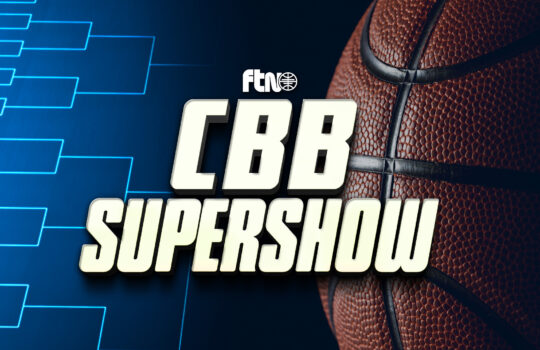

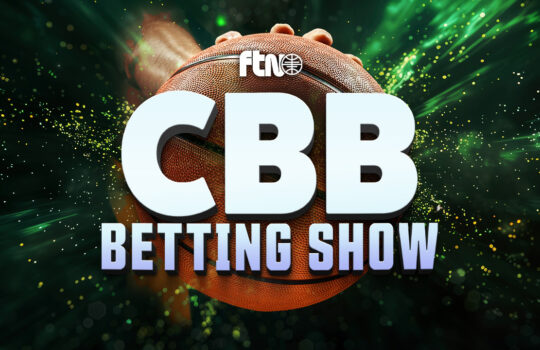











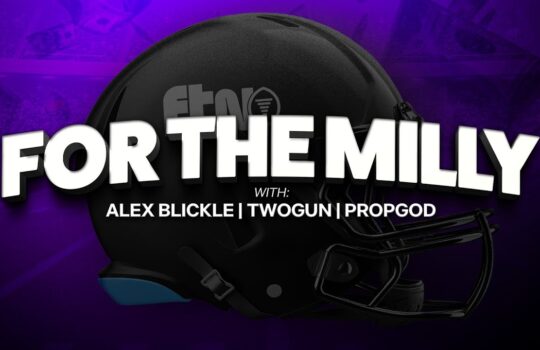






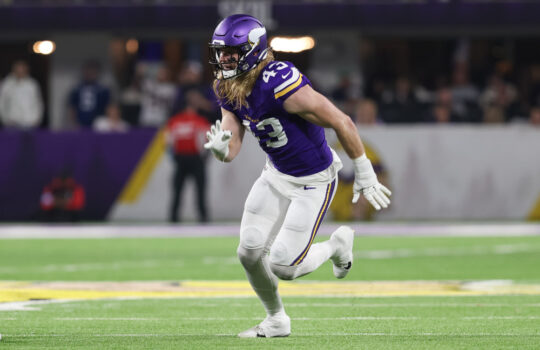



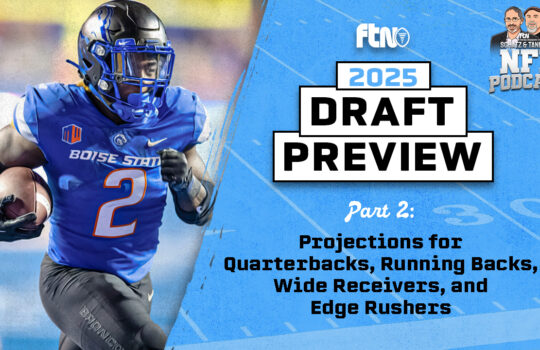

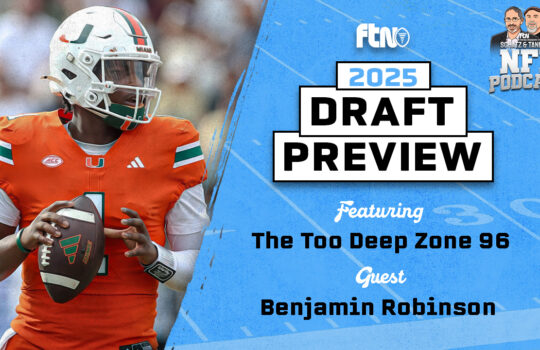
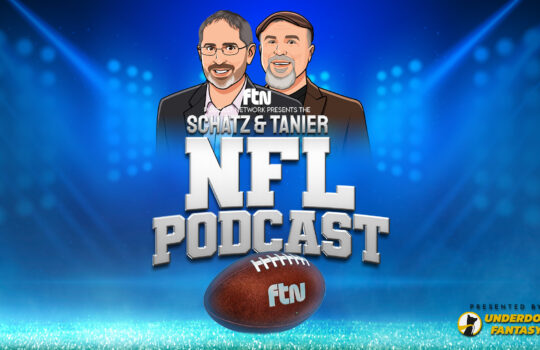








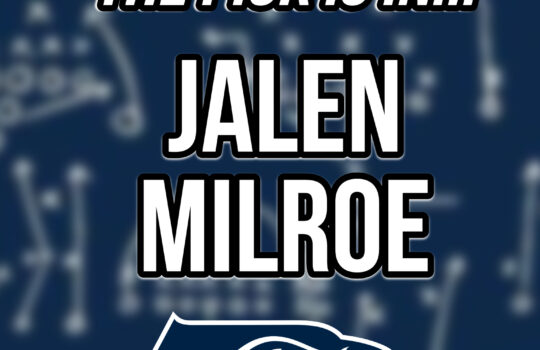

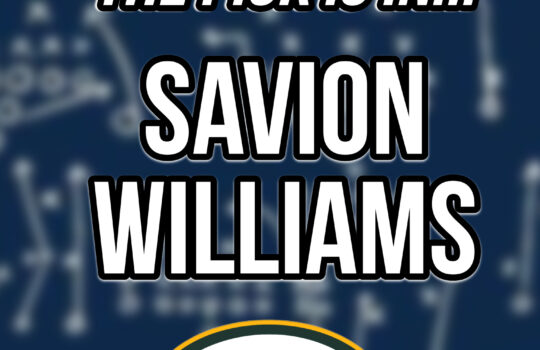
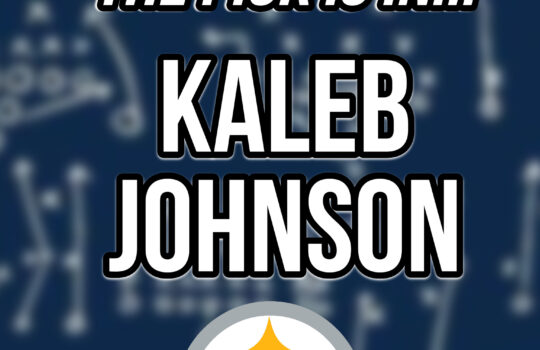

 New York Jets
New York Jets  New England Patriots
New England Patriots 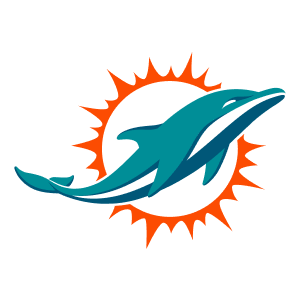 Miami Dolphins
Miami Dolphins  Buffalo Bills
Buffalo Bills  Pittsburgh Steelers
Pittsburgh Steelers  Cleveland Browns
Cleveland Browns  Cincinnati Bengals
Cincinnati Bengals 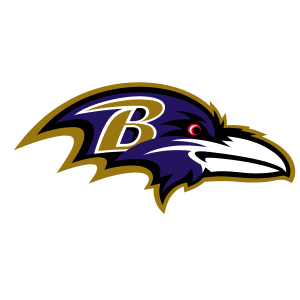 Baltimore Ravens
Baltimore Ravens 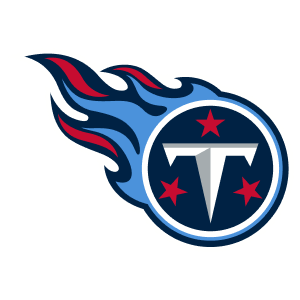 Tennessee Titans
Tennessee Titans  Jacksonville Jaguars
Jacksonville Jaguars  Indianapolis Colts
Indianapolis Colts  Houston Texans
Houston Texans  Las Vegas Raiders
Las Vegas Raiders 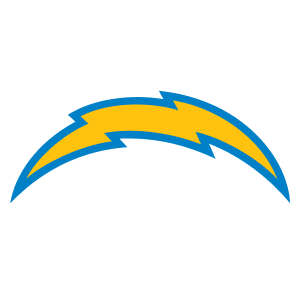 Los Angeles Chargers
Los Angeles Chargers  Kansas City Chiefs
Kansas City Chiefs 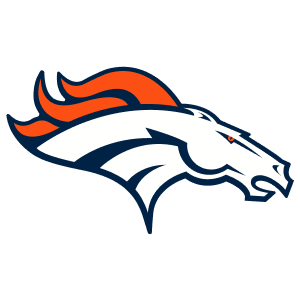 Denver Broncos
Denver Broncos 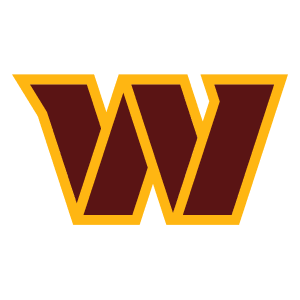 Washington Commanders
Washington Commanders  Philadelphia Eagles
Philadelphia Eagles 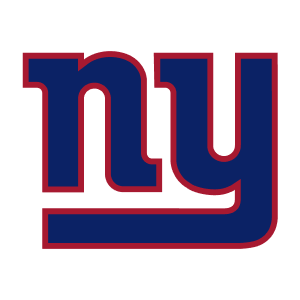 New York Giants
New York Giants  Dallas Cowboys
Dallas Cowboys 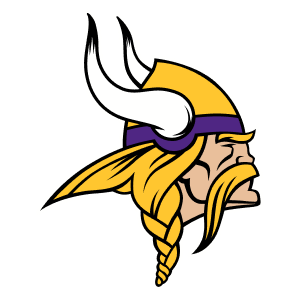 Minnesota Vikings
Minnesota Vikings 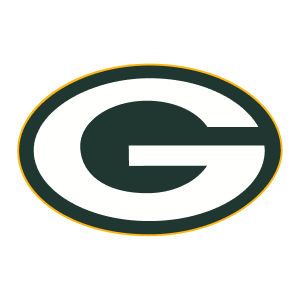 Green Bay Packers
Green Bay Packers 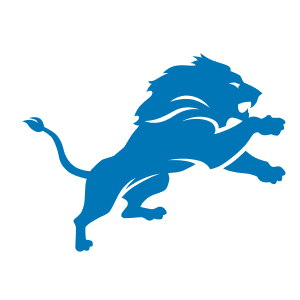 Detroit Lions
Detroit Lions 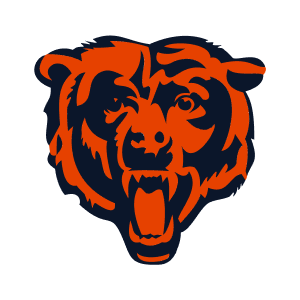 Chicago Bears
Chicago Bears 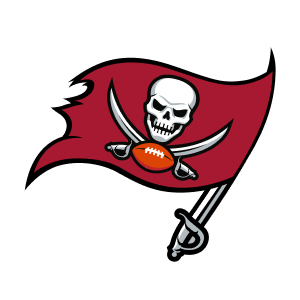 Tampa Bay Buccaneers
Tampa Bay Buccaneers  New Orleans Saints
New Orleans Saints 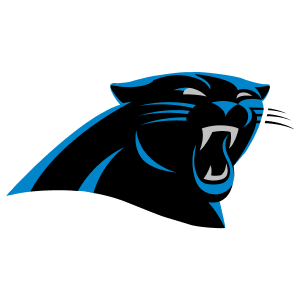 Carolina Panthers
Carolina Panthers 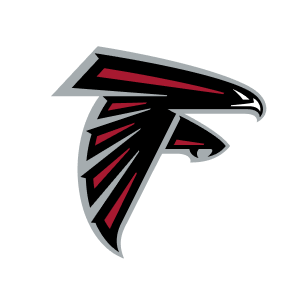 Atlanta Falcons
Atlanta Falcons 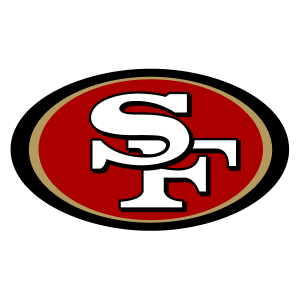 San Francisco 49ers
San Francisco 49ers 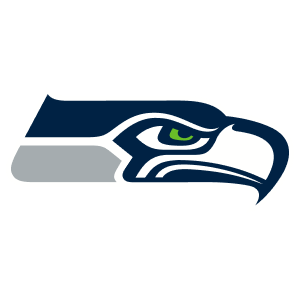 Seattle Seahawks
Seattle Seahawks  Los Angeles Rams
Los Angeles Rams  Arizona Cardinals
Arizona Cardinals 
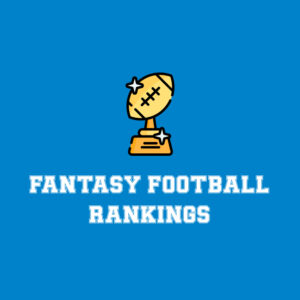
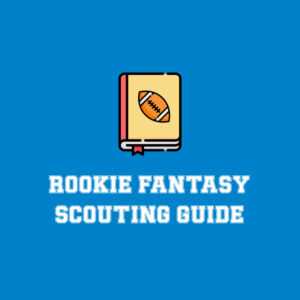


 Boston Celtics
Boston Celtics  Brooklyn Nets
Brooklyn Nets 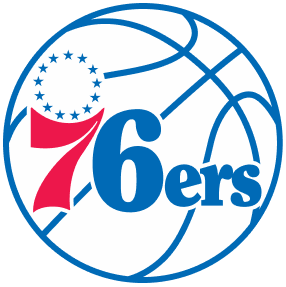 Philadelphia 76ers
Philadelphia 76ers  New York Knicks
New York Knicks  Toronto Raptors
Toronto Raptors  Chicago Bulls
Chicago Bulls  Detroit Pistons
Detroit Pistons  Milwaukee Bucks
Milwaukee Bucks  Cleveland Cavaliers
Cleveland Cavaliers  Indiana Pacers
Indiana Pacers  Orlando Magic
Orlando Magic  Atlanta Hawks
Atlanta Hawks  Charlotte Hornets
Charlotte Hornets  Miami Heat
Miami Heat  Washington Wizards
Washington Wizards  Denver Nuggets
Denver Nuggets 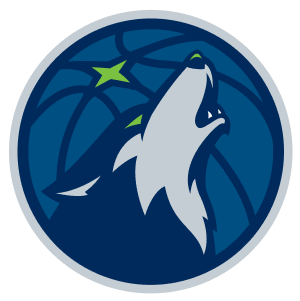 Minnesota Timberwolves
Minnesota Timberwolves  Oklahoma City Thunder
Oklahoma City Thunder  Portland Trail Blazers
Portland Trail Blazers  Utah Jazz
Utah Jazz  LA Clippers
LA Clippers  Golden State Warriors
Golden State Warriors  Los Angeles Lakers
Los Angeles Lakers  Phoenix Suns
Phoenix Suns  Sacramento Kings
Sacramento Kings  Dallas Mavericks
Dallas Mavericks  Houston Rockets
Houston Rockets  Memphis Grizzlies
Memphis Grizzlies  New Orleans Pelicans
New Orleans Pelicans  San Antonio Spurs
San Antonio Spurs 

